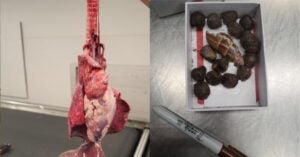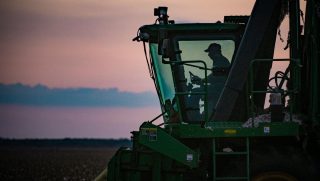Among the many odd and potentially dangerous threats to U.S. agriculture, U.S. Customs and Border Protection Agricultural Specialists’ latest seizure involved an eviscerated goat — a strange item even by CBP standards.
Earlier this month, two passengers arriving from the Democratic Republic of Congo to the Chicago O’Hare International Airport were referred to agriculture specialists for secondary inspection.
In line with the spirit of Friday the 13th, eclipses, Halloween, and all things spooky, the agricultural specialists inspected the travelers’ baggage and found one pound of unknown meat, two pounds of garden eggs, and 15 pounds of raw goat viscera, including the trachea, heart, lungs, liver, kidneys, and entire digestive system.
Agriculture specialists seized and destroyed the prohibited items to keep livestock diseases and plant pests out of the United States.
Besides being a little strange, these kind of items are prohibited because of their potential to impact U.S. agriculture negatively.
“There are real dangers these items can have if they are introduced in the U.S. economy,” said LaFonda D. Sutton-Burke, CBP Director, Field Operations-Chicago Field Office. “All passengers, whether entering or returning to the U.S., must be truthful and declare all items they are bringing. If one prohibited item enters the U.S., it could have dangerous ecological or economic results.”

That’s not the end of the oddities being brought over. Just last week, U.S. CBPAS at Minneapolis-Saint Paul International Airport (MSP) seized a small box containing giraffe fecal material.
“Items like these can harbor pests and diseases, if introduced into our agriculture systems or natural resources, could cause significant damage to our food supply or native species,” said Michael Pfeiffer, Area Port Director, Chicago. “Our agriculture specialists are dedicated to protecting these essential American resources from foreign pests and diseases.”

